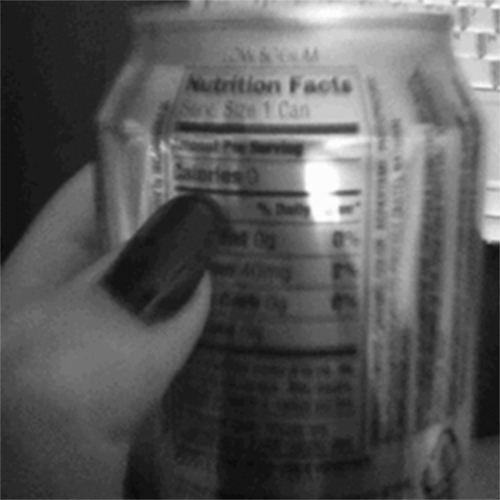No, nutrition labels shouldn’t include exercise needed to burn something off

Despite my role as a positive body image crusader – encouraging women to love their body at any size – I cannot deny the fact that something must be done to combat our society’s growing weight problem.
Last year, Statistics Canada placed our country’s obesity rate at just over 20 per cent, a number that continues to grow steadily each year. And obviously this issue isn’t limited to our fair nation. In the U.K., for example – obesity rates have doubled since the early 1990s, and Australia claims one in every four children are overweight or obese. Basically the whole world is battling the bulge.
Across the board, governments are putting a fair share of blame on nutrition labels – claiming that the average consumer doesn’t understand what they’re putting in their bodies. In Canada they’re working to make labels more relatable by including things like what percent of our daily intake that serving of food is, as well as whether that is considered a high or low amount. For the record – anything under 5 per cent is considered low and anything about 15 per cent considered high. While Canada paves the way for these modest changes over the next few years, the U.K. is attempting to take user-friendly food labels to the next level.
Shirley Cramer, the head of the U.K.’s Royal Society for Public Health wants to introduce labels that show exactly how much exercise it would take to burn off each serving of food – for example, one muffin equals 265 calories equals a 25-minute jog.
ALSO SEE: Is this 25-calorie pasta too good to be true?
“The aim is to prompt people to be more mindful of the energy they consume and how these calories relate to activities in their everyday lives, to encourage them to be more physically active,” explains Cramer.
OK, I see her point. If there was a neon sign over the desert table indicating the spin class I’d have to take to make up for my plate of sweet treats, I would likely think twice. Case closed, right? Not so fast. When you look passed the obvious junk food examples – the theory starts to fall apart.
For one, reducing food to its caloric value is a dated and misinformed mindset. Over the last few years there is a lot of data proving that not all calories are made equal. A recent study out of Kansas, for example, discovered that our bodies metabolize whole foods more efficiently than their processed counterpart. According to this theory – the required activity to work off 300 calories worth of almonds would be completely different than 300 calories worth of potato chips. This type of labelling reduces all foods to the same quality, giving the message that it doesn’t matter what the food is made of, all you need to be concerned with is calories.
The fibre, protein and iron in almonds are incredibly important nutrients that can also contribute to our health and weight loss while chips have nothing to offer. These two foods are not the same in any way shape or form and to represent them as such is not only inaccurate, it’s irresponsible. It promotes the “Why would I reach for a nutrient-dense salad when the bacon cheeseburger is going to take the same amount of time to work off?”-type of mindset.
But it’s not just the physical implications of this plan that could be both confusing and damaging – there are substantial psychological consequences as well. Almost as frightening as society’s rising obesity rates are the rising incidences of eating disorders and negative body image. Stats show that more than 20 per cent of young Canadian girls battle some form of food or exercise obsession throughout their childhood and adolescence. Special K’s #ownitall initiative reminds us that nearly all of us have “I hate my body” moments ever single day. Making people, young and old, so calorie focused would surely only make these body-issues worse.
ALSO SEE: Indigo, ex-Lululemon CEOs take aim at sugar, call for transparent food labelling
Imagine, every time you go to reach for something to eat you’re reminded of how much time you need to spend at the gym later? This type of shaming would cause even those with a healthy relationship with their bodies to be hyper-aware. But imagine how a young girl, struggling with her body image, would feel when she looked at the values on her tuna sandwich. Nothing productive can come of that kind of messaging.
One of the biggest lessons I learned when I was mending my damaged relationship with food, many years ago, was that food is best seen as fuel. It was only when I truly accepted that in order to feel (and look) my best, I had to feed myself with the things that will make the body run optimally, that I started to treat my body with love and respect. This, I’ve learned, has nothing to with “calories in,” as they say, and everything to do with nutrition and intuition.
Instead of focusing on how to burn it off, it would be far better serving to understand how the food we eat is impacting us. How about a label that tells me what food will give me the energy to run faster? Or, a label that indicates what options will help my joints move better, allow my muscles repair more quickly or make my brain function sharper? These are the things we need to be educated on. These are the things that will help to make a difference inside and out.
What do you think about the potential of nutrition labels including amount of exercise needed to burn off a certain food? Helpful or harmful? Let us know by tweeting @YahooStyleCA.
